If you are a fan of gummy candies (also known as gummy bears) and want to buy them for the upcoming Tet holiday, we advise you to consider stopping reading this article. This article will reveal a truth that the gummy candy industry does not want you to know, a truth that may haunt you forever.
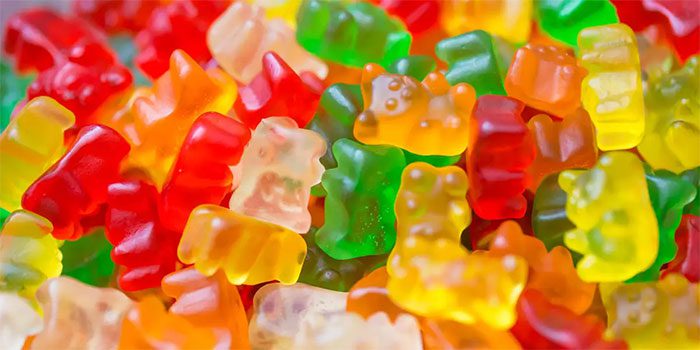
Gummy candies are very popular among children.
If you still wish to continue, let’s start with the ingredient label of any gummy candy package. Typically, you will see the product made from water, sugar, corn syrup, vegetable oil, coloring, and flavoring. Is there anything else? The most important ingredient that gives candy its chewiness is: gelatin. But what is it?
The video below by Belgian filmmaker Alina Kneepkens will reveal how gelatin in gummy candies is made, where it comes from. Once again, we advise you to consider not watching this video, especially while eating gummy candies:
How are gummy candies made?
It turns out that gelatin in gummy candy products is extracted from collagen, which is the elastic protein found in your skin. When you press your finger into your skin and see it dent and then bounce back, thank the collagen molecules. When your skin shows wrinkles or loses elasticity as you age, that’s due to collagen degradation.
But collagen is not only found in the skin; it is also an essential protein that makes up muscle fibers that allow you to move, bones that keep your body sturdy, and many other tissues and organs.
With all these important functions, collagen is, of course, also present in the bodies of animals. Food ingredient manufacturers know this, and they aim to collect collagen from by-products of the livestock industry, specifically from the skin and bones of cows or pigs.
To save on transportation costs, a gelatin manufacturing plant is usually built right next to a slaughterhouse. This is where the raw materials are brought, inspected for quality, and sorted.
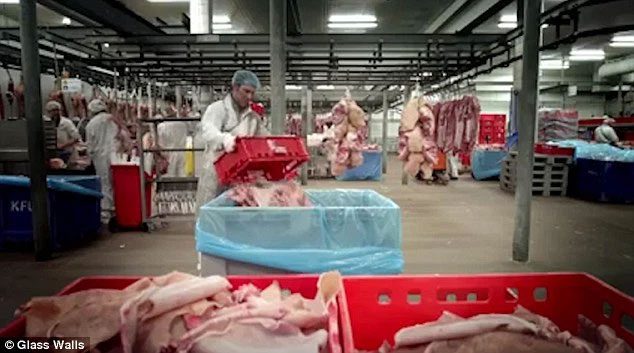
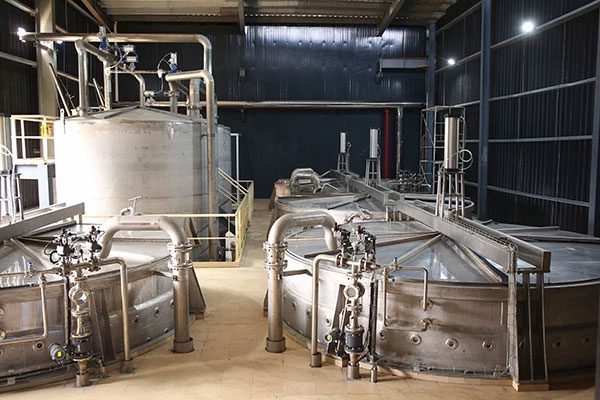
Inside a gelatin manufacturing plant.
Skin, bones, and decayed parts will be discarded, and the remaining parts are put into machines to be chopped. The manufacturer then washes the raw materials under high-pressure water before soaking them in hot water to separate oil and fat.
Once the fat content is reduced to about 2%, the raw material is lifted and placed on a conveyor belt to an industrial dryer.
Next is the acid and alkaline treatment process that lasts about 5 days. Animal skin and bones are soaked in 4% hydrochloric acid tanks with a pH of less than 1.5 and sodium carbonate with a pH above 7. The purpose is to remove all minerals and bacteria, facilitating the release of collagen.
The most critical step occurs afterward, where collagen is boiled with distilled water in large extraction tanks to be converted into gelatin. The gelatin solution is then recovered and rapidly pasteurized for 4 seconds at a temperature of 140 degrees Celsius.
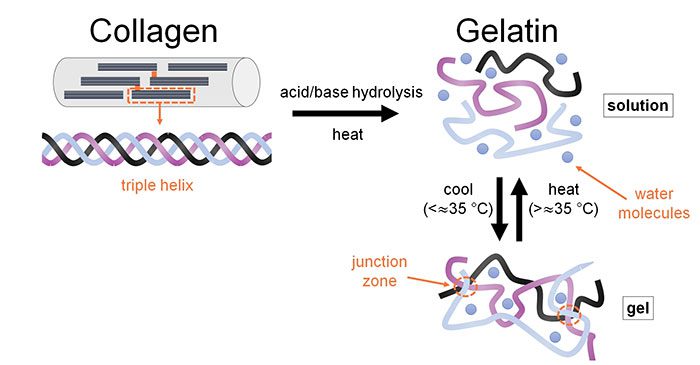
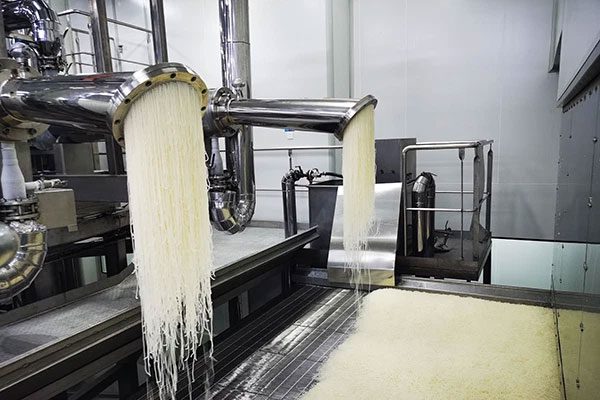
Pure gelatin will flow out, then be concentrated and pressed into sheets.
Filters then continue to separate excess products from the mixture. Pure gelatin will flow out, then be concentrated and pressed into sheets. Finally, to obtain gelatin powder, the manufacturer will grind the sheets until they are truly smooth and fine.
Depending on the purpose, the finished gelatin powder will be packaged to be sent to candy manufacturers, processed food companies, or sold directly in supermarkets for those who want to make jelly at home.
Due to its unique properties, gelatin is commonly used to make chewy and viscous foods such as candies, jellies, jams, yogurts, cheeses, soups, and sauces. It is even added to some medications, vitamins, and cosmetics.
Therefore, a word of advice for vegetarians: read food labels before you find gelatin breaking your beliefs and compassion. Fortunately, there are some types of gummy candies on the market, such as those from Trader Joe’s, that do not contain gelatin.
There is a molecule called agar, extracted from algae, which also has gelling properties and can replace gelatin. If the gummy candy you buy contains agar, you won’t have to worry about your vegetarian diet.
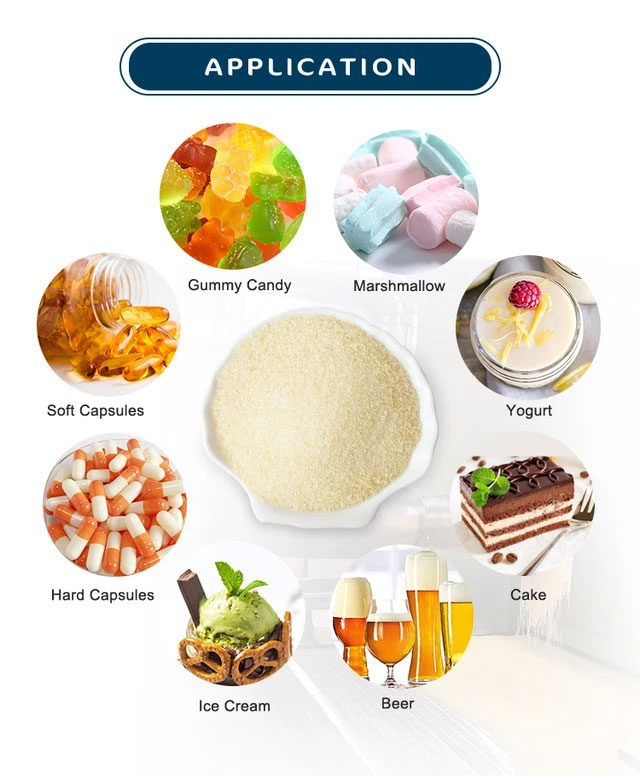
Gelatin is commonly used to make chewy and viscous foods.
On the other hand, those who consume foods containing gelatin may find some comfort in the fact that it is a nutrient. Gelatin contains up to 18 amino acids and has a high protein content.
One of these is lysine, an amino acid that promotes calcium absorption, strengthens bones, reduces osteoporosis, and enhances muscle health. The amino acid glycine found in gelatin helps improve sleep and some neurological functions.
The protein in gelatin can help you lose weight by increasing feelings of fullness and energy. Additionally, gelatin contains glutamic acid, which is converted into glutamine that aids digestion and strengthens the stomach lining.
A 2014 study indicated that glycine, another amino acid found in gelatin, may help people with type 2 diabetes manage their condition. However, this is not advice that you should eat gummy candies to gain that benefit. The high sugar content in gummy candies is likely to be more harmful than the benefits derived from gelatin.
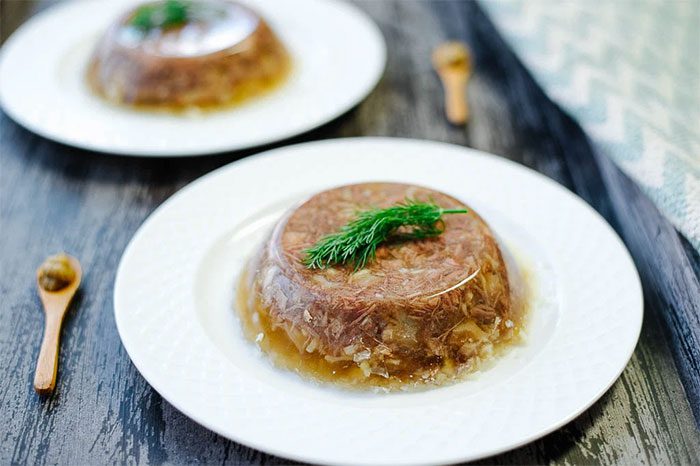
The healthiest type of gelatin you can eat is homemade gelatin.
It turns out that the healthiest gelatin you can eat is homemade gelatin. The English nobility in the 15th century used to simmer beef feet for 24 hours to obtain a broth rich in gelatin. Now you can do the same by simmering leftover meat or bones after cooking chicken, pork, or beef over low heat.
Add carrots, onions, or herbs for extra flavor. Occasionally check and add water to your soup. When the mixture appears to thicken, that’s when you have gelatin-rich broth, perfect for eating on its own or adding to soups and stews.
This Tet holiday, if you crave gelatin, consider making it this way to save leftover food and think twice about the gummy candies you consume.





















































